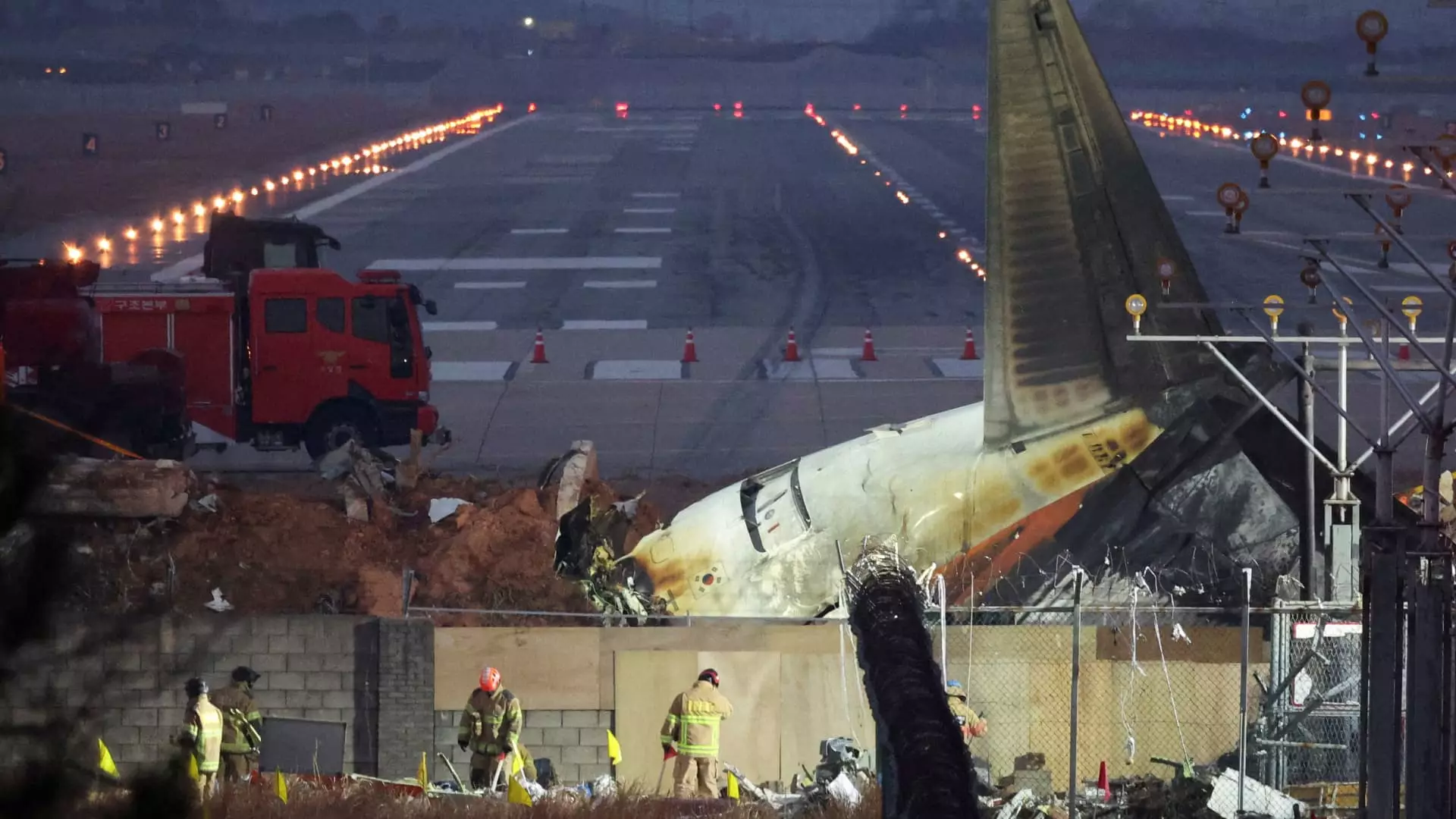On a tragic Sunday morning, aviation safety took a catastrophic turn as Jeju Air Flight 7C2216, a Boeing 737-800, crash-landed in South Korea, resulting in the death of 179 out of 181 passengers on board. The flight had completed an overnight journey, but upon approach, it is believed that both the landing gear and the flaps were retracted leading up to the landing. The aircraft struck a mound of dirt and a concrete wall positioned at the runway’s end, igniting flames that consumed the jet and obstructed any potential escape for its passengers.
The design of the airport and its surrounding infrastructure, particularly the placement of barriers, has come under scrutiny in the aftermath of this disaster. Experts such as Todd Curtis, founder of Air Safe Media, have pointed out that the presence of these obstacles significantly hindered the aircraft’s ability to come to a complete stop. There is an undeniable concern that, had the wall not been there, survival outcomes could have been more favorable for many onboard.
Current standards in airport design often include the use of engineered material arresting systems (EMAS), which are specifically designed to mitigate the risks posed by overruns by providing a crushable material to decelerate aircraft safely. The absence of such safety measures at the Muan International Airport raises serious questions about infrastructure adequacy in the face of aviation safety standards.
As investigations commence to determine the primary cause of this disaster, multiple dimensions will be thoroughly scrutinized—aircraft maintenance, pilot oversight, and potential environmental factors, such as the possibility of a bird strike leading to engine failure. Experts warn that the investigation process will be lengthy and complex, requiring in-depth analyses of cockpit recordings and maintenance logs to get to the root of the problem.
Aviation safety consultant John Cox noted that many fatalities may be attributed to “blunt force trauma from hitting the wall,” underscoring the degree to which design flaws in airport infrastructure contribute to air travel safety risks. The fact that this incident marked the worst air disaster in South Korea invokes a greater sense of urgency for revisions in safety protocols.
The unfortunate event with Jeju Air Flight 7C2216 serves as a grim reminder of the essentiality of rigorous safety regulations when it comes to airport design and aircraft operations. Lessons learned from past incidents must inspire proactive reforms in infrastructure, ensuring that airport barriers are not only in place but also built to minimize risk in crash scenarios. As the investigation unfolds, it is crucial that insights gained from this disaster contribute to the evolution of aviation safety practices globally. Adhering to and surpassing current protocols is essential to safeguard future flights and protect passengers from similar fates.

